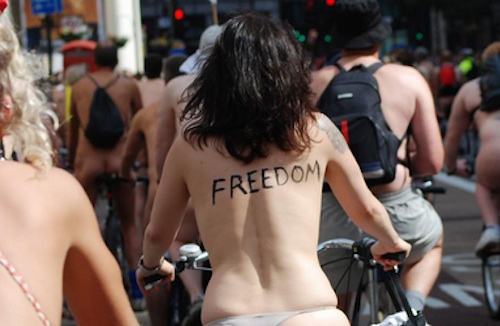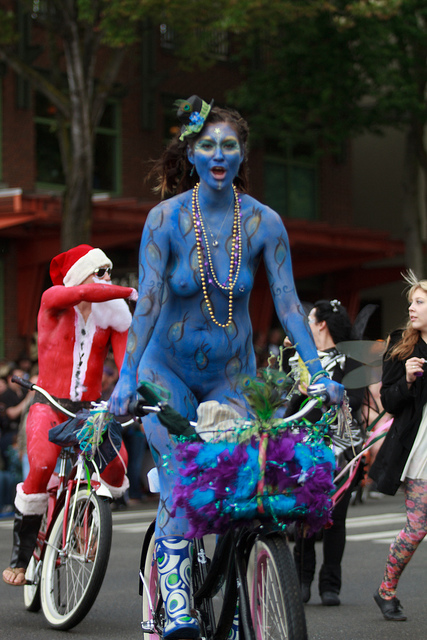I’ve noticed that if one attaches the words “naked”, “nude”, “nudity” or “adult” to one’s work, they’re bound to get more people interested in their written material.
It’s like we’re all still 10 years old and trying to sneak a peek at the National Geographic issue that has all those bare breasted African/Aboriginal/Pacific Islander/you-name-it women.
What gives? Is nudity really that compelling? (I ask this while fully confessing to clicking on articles that promise nudity in some non-pornographic context.) And if so, why?
One elephant journal article alone—Nude Yoga Photos of Model Shot by Husband— has had, to date, 1,826,522 views and remains seemingly permanently on the top ten most popular articles on elephant journal of all time.
What are we looking for when we look at the bared flesh of our fellow souls? Are we trying to figure out our place in the physical human spectrum? Are we titillated? Curious about this thing which represents so much and carries each of us through our respective lives?
Whatever it is, it is a powerful and ceaseless source of fascination.
And it’s not just that we are fascinated with societal standards of “beautiful” bodies—not at all. In fact, one of the most read articles I’ve ever written is Brave Woman Bares All. With over half a million views, it features Beth Whaanga—a gorgeous woman who has undergone several “disfiguring” treatments to beat cancer, and who proudly put up pictures of her post surgical, cancer-free body on Facebook and kept them up despite significant backlash.
Also currently in “Most Popular” on elephant are Female Nipples Causing an Internet Storm, The Incredibly Beautiful Bodies of Mothers, Motherhood Uncensored; What We Don’t See on Instagram, and Sacred Motherhood; Quotes, Art and Photographs. Every single one of these articles features “real” people, (primarily women) meaning they are not models and they have not been airbrushed.
For me, a lot of the preoccupation has to do with the difficulty I have understanding what is “real” and what isn’t. I’ve been so inundated with false and altered images of the human form that I no longer know what is “normal”.
Does every woman’s belly skin become loose after she gives birth? Or does it snap back in good old Hollywood style to it’s former pristine shape? What percentage of people do or do not have cellulite—really? What does a typical 30 year old body look like? A 45 year old? A 60, 70, 80 year old?
And the underlying question, if imperfect is the status quo, can I forgive myself my endless physical imperfections and just wear a swimsuit without having a mental f*cking breakdown already?
I also wonder why we must so explicitly announce that there will be nudity in the content we are about to read. Is it such a fearsome prospect that we must be warned or (as George Costanza would say) worlds will collide?
I can only speak for myself. I confess, I am in awe of bodies.
Old, young, perfect, imperfect—I find them all captivating. And not all for the same reasons. I find some bodies beautifully sexy in form—elegant and lush. I find some bodies inspirational—bodies like Beth Whaanga’s—that have won wars with disease, adversity or age and lived on. I find some bodies tell the story of the universe—the sacred body of a mother or a child.
Like the breath, our bodies connect us in a common experience that is with us from the moment we are born until the moment we die. Our physicality is a language we all speak. Perhaps this is the true reason we seek to know each other’s flesh in such myriad ways—we are simply, as always, trying to find connection in this oh-so perplexing state of being human.
~
Author: Erica Leibrandt
Editor: Alli Sarazen
Photo: Jude/Flickr &













Read 0 comments and reply